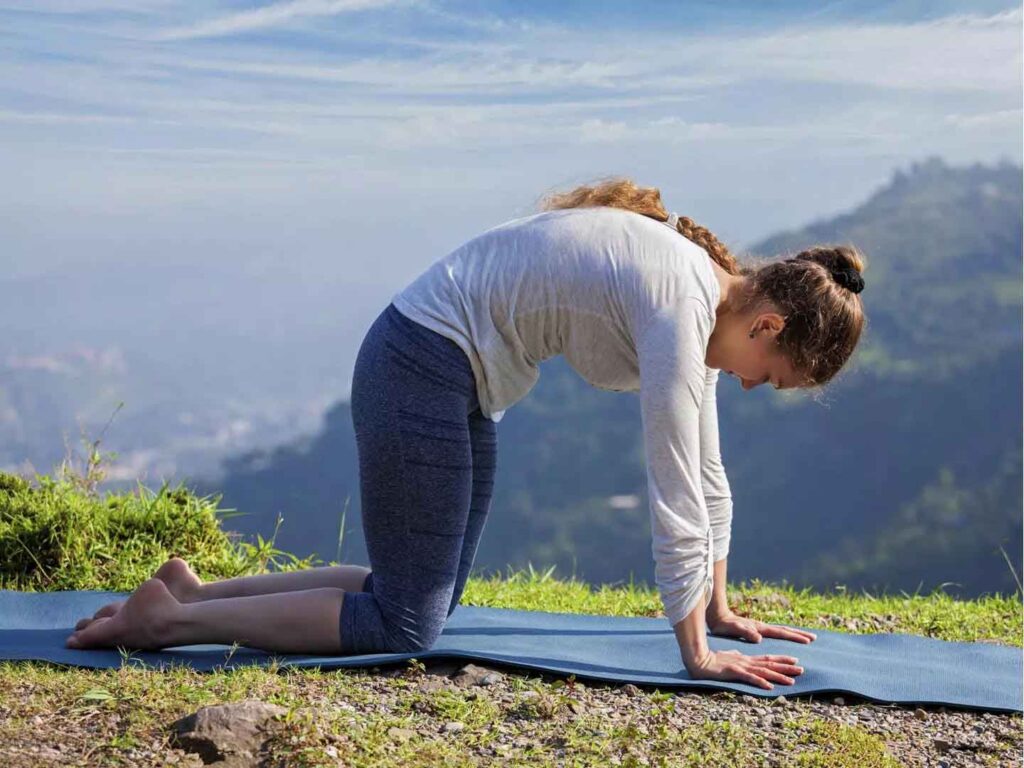Stretching the muscles, tendons, and ligaments that support the spine on a regular basis is an important component of all back exercise programs. Stretches to relieve neck and back pain are likely to be prescribed by a doctor, physical therapist, or spine specialist.
The following are some of the advantages of stretching :
- Relaxing the muscles that support the spine; tension in these muscles can exacerbate pain from a variety of back pain conditions.
- Improving mobility and range of motion.
- Lowering the risk of disability from back pain.
Chronic pain may necessitate weeks or months of regular stretching to successfully reduce pain. Stretches may be included as part of a physical therapy program and/or recommended to be done at home on a daily basis.

Stretching techniques for relieving back pain
Basic neck stretches are simple enough to do on a regular basis throughout the day, whether at home, at work, or even in the car. Here are some examples :
- Flexion stretch from chin to chest
Gently bend the head forward, bringing the chin towards the chest, until a stretch is felt in the back of the neck.
- Stretch from ear to shoulder using lateral flexion
Bend the neck to one side, as if touching the ear to the shoulder, until you feel a stretch in the side of your neck. Maintain a comfortable but healthy posture by keeping the shoulders down and back.
- Stretch your levator scapula
Place one arm against a wall or doorjamb, elbow slightly above the shoulder, and turn the head in the opposite direction. To feel a stretch in the back of the neck, bring the chin down towards the collarbone. To hold the stretch for the desired amount of time, gently pull the head forward with the other hand.
- Corner stretch
Stand in a room corner, forearms on each wall, elbows around shoulder height. Lean forward until you feel a stretch under your collarbone.
Keeping the following tips in mind can help you stretch your muscles effectively and safely :
- Wear comfortable clothing that won’t bind or constrict movements.
- Force the body into difficult or painful positions; stretching should be painless.
- Avoid bouncing into a stretch, which can cause muscle strain.
- Stretch on a clean, flat surface with enough room to move around.
- Stretches should be held for 15 to 30 seconds to adequately lengthen muscles and improve the range of motion.
- Repeat a stretch 2 to 5 times—a muscle usually reaches maximum elongation after 4 repetitions.
- Stretch only one side of your body at a time.
Stretching exercises for lower back pain
Lying on your back, bring both knees to your chest while flexing your head forward until you feel a comfortable stretch across your mid and lower back.
Cat-cow
Kneel down and place your hands in front of you on the ground. Keep your knees directly beneath your hips and your hands shoulder-width apart. Take a big breath in, arch your lower back, lift your head, and tilt your pelvis up like a “cow.” Deeply exhale, draw your belly in, arch your spine, and crouch down like a “cat” by bringing your head and pelvis down. Repeat a number of times.
Single knee-to-chest
Lay on your back on a stable surface, heels flat on the floor. Till your lower back stretches, slowly raise one leg to your chest. As comfortably as you can, bring the knee near to your chest. Maintain the opposing leg at a comfortable angle, whether that be with the knee bent or the leg extended. Hold for approximately 30 seconds. Repeat while switching legs.
Pelvic tilt
Knees bowed, lie on your back on the ground. By contracting your abdominal muscles and gently raising your pelvis, you can flatten your back against the floor. Up to 10 seconds can be held.
Glute bridge
With your knees bent and your feet flat on the floor, lie face up on the floor. Continually keep your arms by your sides, palms facing down. Up till your knees, hips, and shoulders are in a straight line, lift your hips off the ground. To prevent overextending your back throughout the workout, squeeze your glutes firmly and maintain your abdominals contracted.
Bird dog
Forming a straight line from your extended hand to your extended foot, extend one arm straight out in front of you. Maintain a squared-off hip position. If your low back starts to sag, lift your leg as high as you can while maintaining a straight back.

Do the above exercises to stretch and strengthen your back and supporting muscles to prevent back discomfort. Call Texas Specialty Clinic at (254) 324-7231 in the event of complexity.

